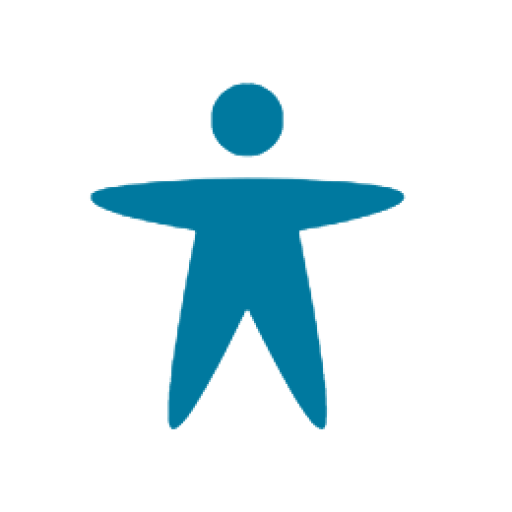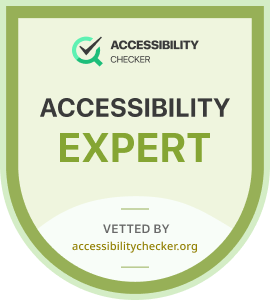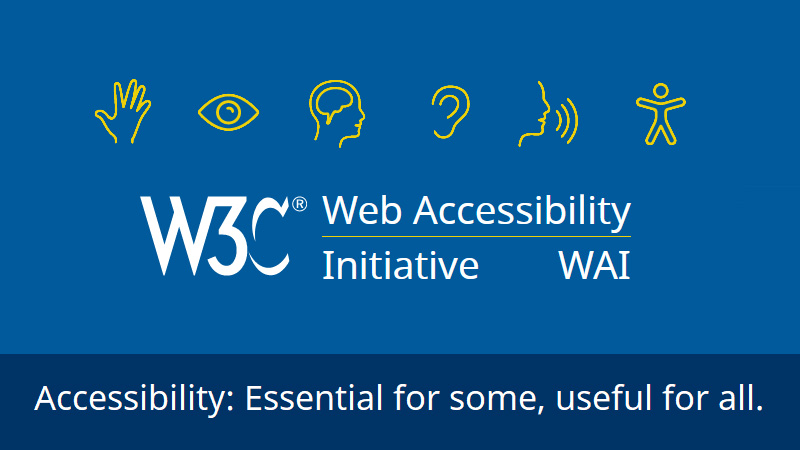
Accessibility Guidelines Working Group
Company
Accessibility Badges

The Accessibility Guidelines Working Group (AG WG) has one core focus: to develop specifications that support the implementation of accessible web technologies for people with disabilities and to develop and maintain any support materials.
Chaired by Charles Adam of Oracle Corporation, Rachel Montgomery of Library of Congress, and Alastair Campbell of Nomensa, the Accessibility Guidelines Working Group is another organization that’s making giant strides in supporting the disabled community.
The group currently has 223 participants, which includes 41 invited experts, all representing 68 organizations.
What the AG WG is Currently Working On
There are several projects that AG WG is involved in at the moment, all of which fall into two categories:
WCAG
The version of the Web Content Accessibility Guidelines (WCAG) that most global accessibility acts currently recommend is WCAG 2.1.
However, WCAG 2.2 is in its final stages and will soon be the revised standard for web accessibility.
While this is happening, AG WG is also working on WCAG 3, which will include further updates to web accessibility requirements for websites and mobile applications across the globe.
Task Forces
Task forces are used by AG WG to focus on specific projects that don’t fall under the WCAG umbrella. Here are some of the main task forces:
Accessibility Conformance Testing Task Force. This group is tasked with developing a framework and library of test rules to promote a unified interpretation of WCAG 2.0. This framework can be used by test tool developers for more consistency.
Cognitive and Learning Disabilities Accessibility Task Force. Developing proposed guidance and techniques that make web content and content authoring more usable for people with cognitive and learning disabilities is why this task force was formed.
Low Vision Accessibility Task Force. Using WCAG 2.0 techniques, this task force identifies issues and specifies solutions to web accessibility issues affecting users with low vision.
Mobile Accessibility Task Force. This task force produces techniques as well as guidance documents that address accessibility in the mobile space.
Silver Task Force. To produce effective and flexible solutions for making content and functionality accessible to people with disabilities, this task force uses research-focused, user-centered design methodologies.
WCAG2ICT Task Force. This group is tasked with developing documentation describing how WCAG 2.1 and 2.2 criteria could apply to non-Web Information and Communications Technologies.
How AG WG Gets Things Done
The Accessibility Guidelines Working Group uses a number of tools and procedures to perform its work, including:
Teleconferences. Since it is not always possible to bring everyone together, AG WG uses weekly teleconferences to coordinate with and update task forces and other key members. However, face-to-face meetings do still take place.
Email Lists. Along with teleconferences, AG WG also manages a number of email lists, which they use to communicate important information and updates.
Source Repository. Any publications under development are maintained in the WCAG 2.0 GitHub repository and WCAG 2.1 GitHub repository. These repositories make it easier for everyone to have access to updates and to make requests and suggestions.
IRC. To record minutes of teleconferences and retain chat records, working groups use IRC.
How to Comment, Contribute, and Participate
If you would like to participate and contribute to AG WG’s efforts, you can use the following links:
- How to contribute to the Working Group and file comments;
- How to contribute to the source repository directly;
- How to participate in (join) the Working Group.
And for further general information on the Accessibility Guidelines Working Group, you can visit their website here.
